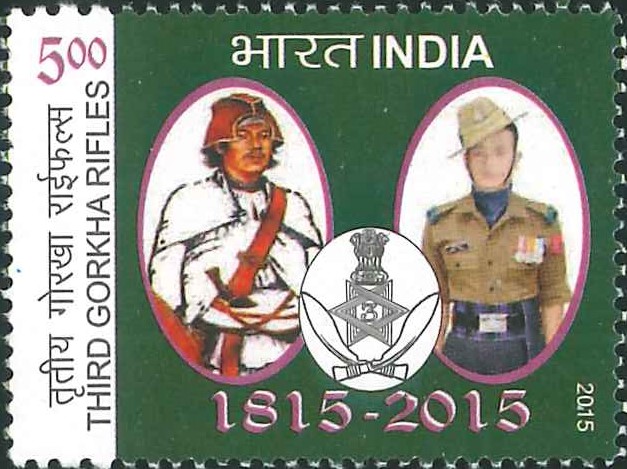
Gorkha Rifles
Complete Set of 2 nos of special postage stamps on the Bicentenary (1815-2015) of the 1st and 3rd Gorkha Rifles, two senior-most Gorkha infantry regiment of the Indian Army :
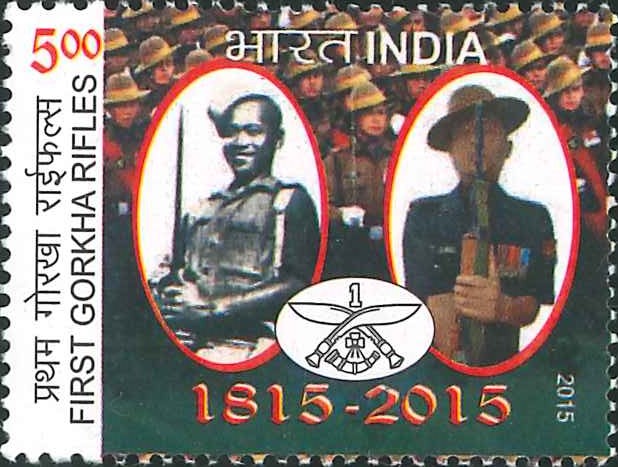
 Issued by India
Issued by India
Issued on Nov 2, 2015
Issued for : Department of post is pleased to release a commemorative postage stamps on First Gorkha Rifles and Third Gorkha Rifles.
Credits :
Stamp/First Day Cover/Cancellation : Nenu Gupta
Type : Stamps, Mint Condition
Colour : Multi colour
Denomination : 500 Paise each
Stamps Printed : 0.6 Million each
Printing Process : Wet Offset
Printer : Security Printing Press, Hyderabad
About First Gorkha Rifles :
- The History of The First Gorkha Rifles is a fascinating account of campaigns and battles. During the early eighteenth century, the Gorkhas from Nepal had extended their empire into Kumaon, Garhwal and Kangra Hills. This led to a confrontation with the British East India Company, resulting in the Gorkha War of 1815. Impressed by the fighting qualities of the Gorkhas, the East India Company offered to raise a Gorkha Regiment from the remnants of Amar Singh Thapa’s Army after the Treaty of Sigauli. Thus, the First Nusseree (meaning friendly or loyal) Battalion came into being on 24 Apr, 1815 at Subathu, the present home of the 14 Gorkha Training Centre.
- The Regiment soon started blazing a trail of glory and got its first Battle Honour of “BHURTPORE” in 1826. In 1850, the Regiment got its regular status and was renamed “66th Gorkha Regiment”. In Feb 1858, The First Victoria Cross was earned when Lt. J. A. Tytler was awarded the coveted distinction in the Battle of Haldwani. During World War I, it took part in the battles fought in France, Belgium, Mesopotamia (Iraq) and Palestine. All the Battalions of the Regiment fought on the Burma front in World War II. Over the years the title of the Regiment was changed several times, the last before Independence being “The 1st King George V’s Own Gorkha Rifles (The Malaun Regiment)”. After Independence, the Regiment was rechristened ‘The First Gorkha Rifles’.
- Immediately after Independence, the Regiment excelled in the 1948 Jammu and Kashmir Operations. The Third Battalion whilst in CONGO, earned the highest gallantry award, when Capt. GS Salaria was awarded the Param Vir Chakra, posthumously. In the recent past the Regiment served with distinction in Sri Lanka, Punjab and Siachen. In the war against terrorism, the second and the Fifth Battalions were awarded COAS Unit Citations for their achievements. The Fourth Battalion was awarded the COAS Citation for their exemplary performance during Op Rakshak.
- In addition to the Five Battalions of the Regiment, 15 Rashtriya Rifles (comprising of personnel from 1 & 4 Gorkha Rifles) played a major role in combating terrorism. The Battalion, since its raising in 1994, has been awarded 07 Shaurya Chakras, 50 Sena Medals and COAS Unit Citation three times in 2001, 2004 and 2006. In all, the Regiment has won thirty one Battle Honours and five Theatre Honours since its raising, so far.
About Third Gorkha Rifles :
- The Third Gorkha Rifles was raised by Sir Robert Colquhoun on 24 Apr, 1815 as The Kemaon Local Battalion. The Battalion comprised of Gorkhas and personnel from Kumaon and Garhwal region.
- In the pre World War era, the First & Second battalion took part in Afgan War, Tirah & Punjab Frontiers. During the World War I & II the Regiment was actively involved in operations in Middle-East, North Africa, Europe & Burma and earned large number of Gallantry awards & Battle Honours. Rfn Kulbir Thapa & Rfn Karna Bahadur Rana of the Second Battalion were awarded Victoria Cross during The First World War.
- The Second battalion was decorated with Battle Honour ‘Pirkanthi’ in the Uri Sector in 1948 while Fifth battalion was awarded ‘Shingo River Valley’ in the Kargil Sector in 1971. Colonel J.R. Chitnis, CO 1/3 GR, was honoured posthumously with the Ashoka Chakra – India’s highest peacetime medal, for valour in Nagaland in 1956.
- The Regiment has done equally well in the field of adventure and exploration. Late Sub ND Sherpa of the Fifth Battalion, winner of Kirti Chakra, Sena Medal and Bar, Vishist Seva Medal and IMF Gold Medal climbed Kanchenjunga in 1977 as a member of the Army Mountaineering Expedition. In 1976, Capt. Ravindra Mishra and Sub Bal Bahadur Pun of the Fourth Battalion were awarded Mac Gregor Silver Medal for their outstanding work in exploring the unmapped and hitherto impassable area in the North East of Arunachal Pradesh.
- During ‘OP VIJAY’ in 1999, 1/3 GR, 3/3 GR, 4/3 GR & 5/3 GR actively participated in the OP VIJAY at Kargil, Drass and Battalik Sector and 3/3 GR was awarded with GOC-In-C Citation for this operation.
Text : Based on the material provided by the proponent.


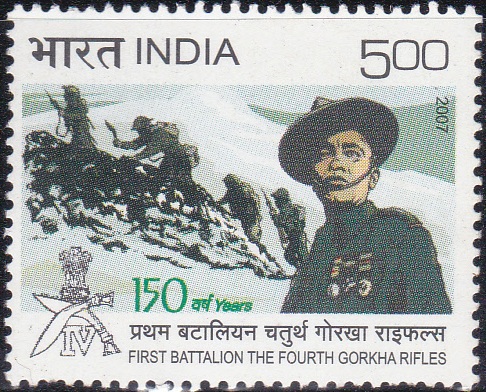
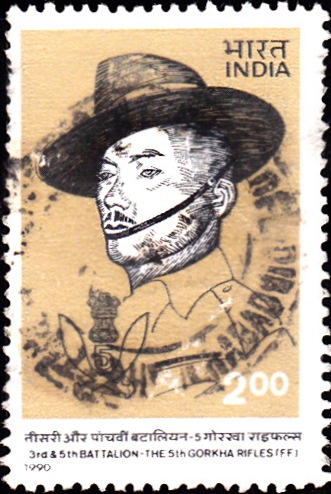
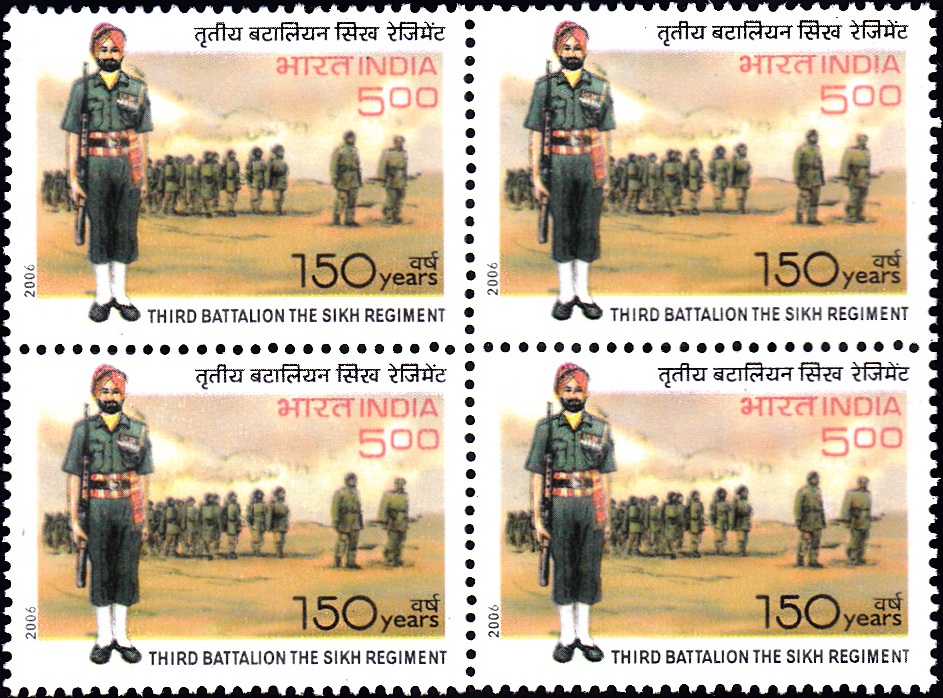
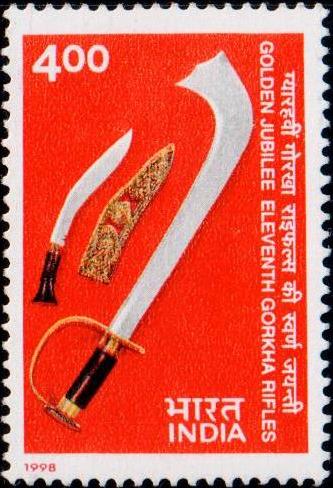

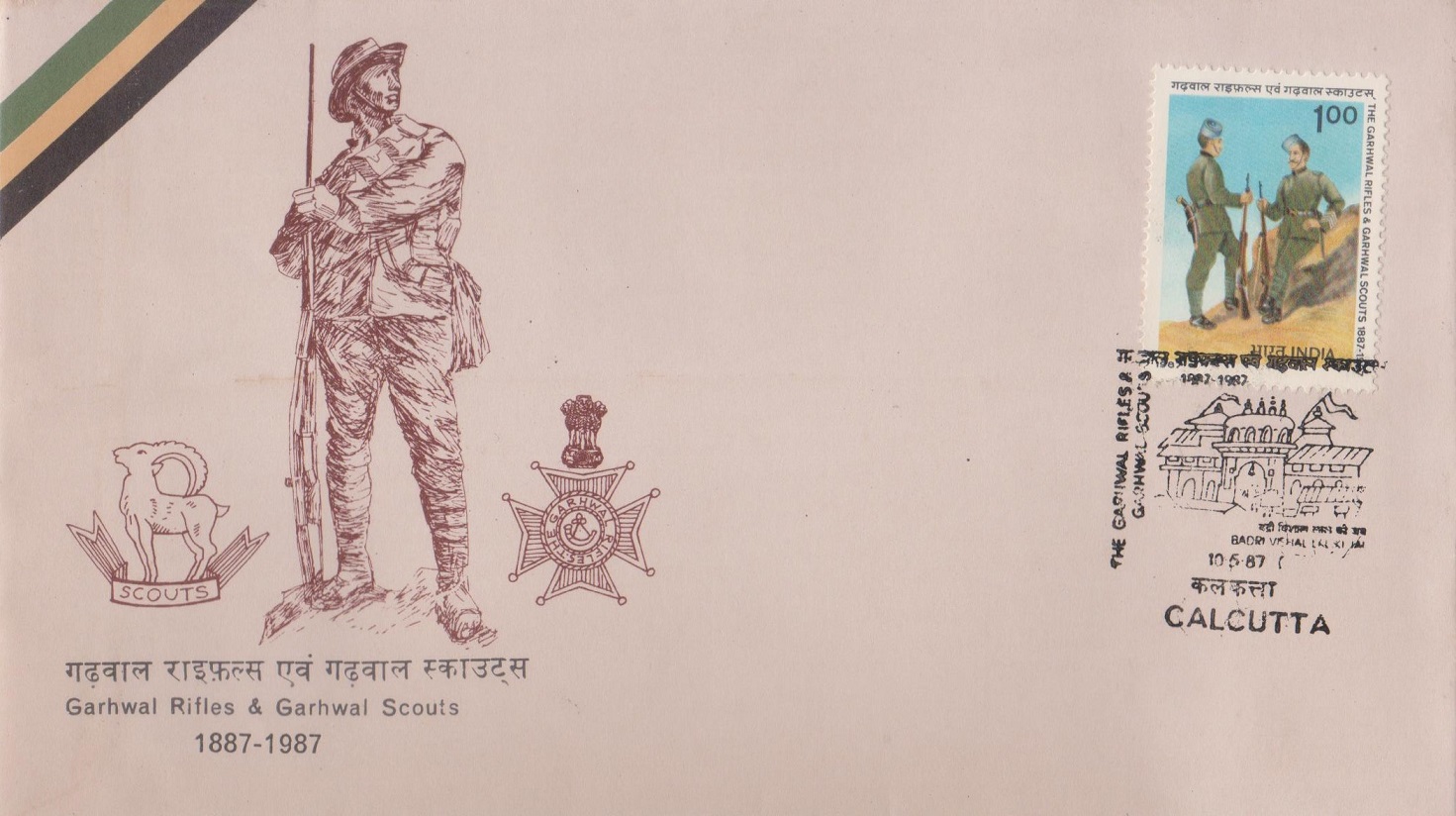
[…] After the siege of Fort St George at Madras by the French in 1758, The East India Company organized their sepoy levies into companies and subsequently to 52 Battalions by 1826. In a significant historic event Madras Native Infantry spearheaded the storming of the Seringapatam Fort in 1799. On 23 September 1803 the Madras Native Infantry, defeated the Peshawa Army during the Second Mahratta War in the Battle of Assaye. In recognition of their services, an insignia of an Assaye Elephant was awarded to the Madras Native Infantry, which later replaced the crown in the crest adopted by the Regiment. During the period 1870-1903, as part of the overall reduction, Madras Native Infantry was reduced by 20 battalions and another 17 were converted into units of the Punjab Regt and Gurkha Rifles. […]
[…] 26 January 1931, at the age of 18 years, Durga Mall joined the 2/1 Gorkha Rifles, Dharamshala Cantonment. Due to Durga Mall’s educated and calm nature, he earned everyone’s […]